1. People & their Activities
1.1. Matthew
1.2. David
1.2.1. Harnessing big data predictive analytics to enhance collaboration and information flow
1.3. Jerri
1.4. Mark
1.5. Julius
2. Concerns
2.1. useless data
2.2. data volume
2.2.1. Too much to analyze
2.2.2. Data itself changes nature
2.3. can we know if what we are telling people is true
2.3.1. Who decides what is valid and how?
2.4. Interventions based on data
2.5. Legal reusability
2.6. Data quality
2.7. Factuality
2.7.1. people think it is all true
2.8. Hypotheses that humans would not have time or interest to develop
2.9. Bringing ideas to the data prejudices it
2.10. Incentives for collecting
2.11. Quantitative v qualitatively
2.12. Improper collection
2.13. Justifying publically funded projects with data
2.14. Utility of data
2.15. need to share and problem of stovepiping
2.16. Impact on people's lives
2.16.1. People are very concerned about institutions and companies and governments having too much data about their everyday lives and how the information is used
2.16.2. People as consumers are not happy about institutions having too much information about them. " I don’t want companies to have my information "
2.17. Cost to produce the data
2.18. Growing sophistication of cyber attackers
2.19. Identity theft
3. Values associated with data
4. Definitions
4.1. Big Data
4.2. Data
4.2.1. Data is what we perceive
4.2.2. If you understand it, it becomes a fact
4.2.3. Data is something that you use to get results, solve problems
4.2.4. Things generated as the result of everyday activity o Data is everything o What’s new about the digital data is that it is discoverable ·
4.2.5. The flow of data between people to facilitate decision-making
4.3. Small Data
4.4. Information versus data
4.4.1. The meaning is derived from the questions you are trying to answer
4.5. Digital vs analogue
4.6. Questions
4.6.1. The crux in this conversation is what kinds of questions are you asking o What kinds of questions you allowed to ask o And who can ask them o And who can answer them
5. Capabilities
6. Types of Data
6.1. Public
6.1.1. Social
6.1.2. Citizen focused
6.1.3. Citizen life events
6.1.3.1. births
6.1.3.2. hospitalization
6.1.3.3. voting
6.1.3.4. taxes
6.1.3.5. death
6.1.4. Data citizens want
6.1.4.1. What works
6.1.4.2. How things are going
6.1.4.3. What doesn;t work
6.1.4.4. Poverty data
6.1.4.5. Economic data
6.1.4.6. Environmental data
6.1.4.7. Geographic data
6.1.5. Open Government data
6.2. Private
7. Action with Data
7.1. Collecting
7.1.1. Voluntary collection
7.1.2. Involuntary
7.1.3. Develop an app that allows people to report pot-holes § App means that the collectors need to have smart phones · That means that there’s an unintended selection bias
7.1.4. Have we been able to harmonize the way we collect data?
7.1.5. Regardless of whether private sector or research is trying to get use of data, if you don’t get consistency of collection it’s no good o Quest for consistency may not be good · Changes, e.g., in how you calculate GDP affects everything else · Institutional competition among agencies · Reliability conversation o
7.2. Visualization
7.3. Tabulation
7.4. Calculation and extrapolation
7.5. Automated Processing
7.6. storage, aggregation, and use
7.7. consumption of data
7.8. Integration
8. Attributes of data
8.1. representational/
8.2. Nonrepresentational
8.2.1. Monitoring Twitter feeds
8.2.2. Soliciting input
8.3. accessible, transmittable, transformable
8.4. Reiliability
8.4.1. Reliability is another piece of data · Reliability is in the eye of the beholder
8.4.2. The notion that the absolute measures recorded are reliable in and of themselves is a product of what you want to do o You rely on the data in order to accomplish something, theoretical or involving action in the world § Need to know that the data was collected in the same way in order to believe in its reliability
9. Data Lifecycle
10. Applications
10.1. Who has the tool that allows people to collect information?
10.2. Risk management
10.2.1. Disaster Risk Reduction
10.2.1.1. bility to identify potential disasters is not enough § Need to ensure that people can coordinate their efforts
10.2.2. If you are able to predict with high degrees of probability where crimes are more likely, do you have a moral obligation to be there to prevent it?
11. Technology
11.1. Emerging Platforms
11.1.1. MPP analytical databases
11.1.2. MapReduce
11.1.3. Hadoop
11.1.4. Big Data analytics
